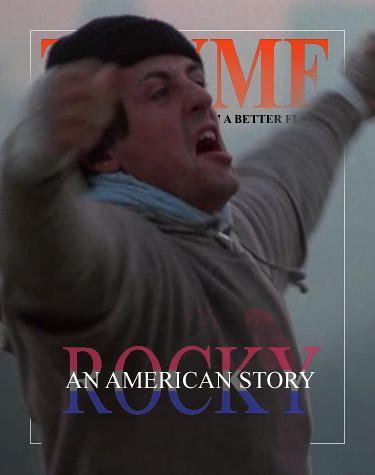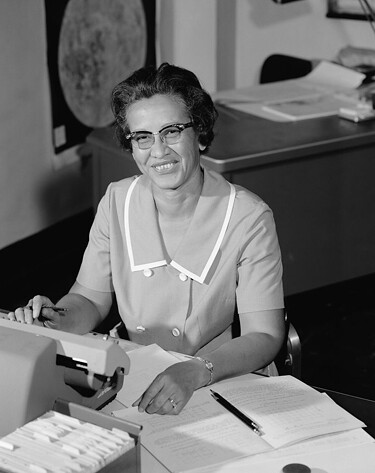
Volume XII, Issue XIX
Why We Love Rocky!
It has been forty years since the release of Sylvester Stallone's classic movie about a washed-up fighter taking his unexpected opportunity and 'Going the Distance.' Here is some insight into the making of the film and Stallone's daring to tell his story:
The long shot story of Stallone and his alter-ego: 'Rocky.'
Everyman's struggle! Rocky Balboa has come to represent the struggle we all relate to. Unknown actor Sylvester Stallone Stallone quickly wrote out the eighty page screenplay in a spiral notebook and pitched it in a last-ditch effort to make his mark in movies. The rest is history.
Who hasn't intensified a workout to the music of 'Gonna Fly Now?' The song captures something of the American Spirit... the drive to overcome in the face of unbeatable odds. It is a quality we need to nurture.
Gonna Fly Now!
Rocky I
Rocky II
Rocky III
Dr. Katherine Johnson
Part of the Inspiration for 'Hidden Figures'

Dr. Katherine Johnson. NASA Photo
A new film debuts at the end of this year about the ladies who made up a special mathematics group at Langley Research Center. I must confess that I had heard discussion long ago about a group of women who had actually calculated the launch windows and trajectory information for Mercury, Gemini and Apollo, but I never knew much about them. Fortunately their story was too good to be left untold and the film is based on a nonfiction book of the same name by Margot Lee Shetterly, who grew up near NASA's Langley Research Center, where Johnson and her colleagues worked.
As a girl, Johnson says that she loved to count. She was fascinated by numbers. Her father worked at West Virginia's Greenbrier Resort and wanted his children to go to college. He worked all the overtime he could to pay for it. Johnson Graduated from High School at fourteen, college at eighteen. Her High School Principal would walk her home and show her the constellations above. He literally showed her how to 'reach for the stars!' An article in 'Business Insider says: "Later, she was mentored by Dr. William W. Schiefflin Claytor, who suggested she aim to become a research mathematician. He created the classes he knew she would need to succeed, including one in which she was the only student. Throughout her education, she says she succeeded in part because she was always asking questions — even when people tried to ignore her, her hand stayed up."
After college, Katherine became a math teacher. She was hired in 1953 to work for NASA — then called the National Advisory Committee for Aeronautics (NACA). In those days, human mathematicians were essential to aerospace engineering. My Mother had done the same kind of work at the Martin Company in Baltimore in the 1940's. Computers would take a while longer to catch up with these slide-rule wizards. Dr. Johnson and her colleagues performed the calculations that literally paved the way for man to go to the moon.
Hidden Figures [click to read] debuts this Winter.
The Place of Faith in Education
A Unique Perspective on the Issue from CIVITAS

Iris.
Education is only adequate and worthy when it is itself religious… There is no possibility of neutrality… To be neutral concerning G-d is the same thing as to ignore Him… If children are brought up to have an understanding of life in which, in fact, there is no reference to G-d, you cannot correct the effect of that by speaking about G-d for a certain period of the day. Therefore our ideal for the children of our country is the ideal for truly religious education." -- William Temple, Archbishop of Canterbury in 1942.
Here is a very interesting report from CIVITAS [1.], on The Place of Faith in Schools [click to read] by Professor David Conway. It adds a new dimension to the debate now raging in America between those who would impose a strictly secular criteria and those who consider Faith an essential component of learning.
A nation which draws into itself continuously, and not merely in its first beginnings, the inspiration of a religious faith and a religious purpose will increase its own vitality… Our own nation… has been inspired by a not ignoble notion of national duty to aid the oppressed – the persecuted Vaudois, the suffering slave, the oppressed nationality – and it has been most... characteristically national when it has most felt such inspiration…
We offend against the essence of the [English] nation if we emphasise its secularity, or regard it as merely an earthly unit for earthly purposes. Its tradition began its life at the breast of Christianity; and its development in time, through the centuries… has not been utterly way from its nursing mother… [I]n England our national tradition has been opposed to the idea of a merely secular society for secular purposes standing over against a separate religious society for religious purposes. Our practice has been in the main that of the single society, which if national is also religious, making public profession of Christianity in its solemn acts, and recognising religious instruction as part of its scheme of education." -- Ernest Barker, Cambridge Philosopher
Professor Conway Concludes: "All would stand to benefit from such committed forms of religious education in the country’s state-funded schools, not simply because it would be likely to improve the educational performance, behaviour and well-being of the nation’s schoolchildren. They would also all benefit because, I believe, only by continuing to provide it can this country be assured of remaining the independent and united liberal polity that it has for so long been and from whose continuing to be such all its diverse inhabitants would derive benefit, even those who do not share that faith or any other."
